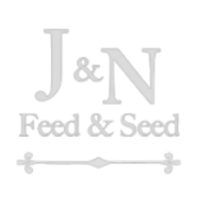 There is considerable controversy regarding the percentage of dietary protein that deer should have. Many people believe that deer cannot tolerate more than 16% dietary protein and that high-protein diets are wasteful or even toxic. This simply is not true.
There is considerable controversy regarding the percentage of dietary protein that deer should have. Many people believe that deer cannot tolerate more than 16% dietary protein and that high-protein diets are wasteful or even toxic. This simply is not true.
Research in South Texas has shown that wild deer diets at certain times of the year can be over 25% protein. Many forages highly utilized by deer are over 30% protein. Obviously, the wild deer are unharmed by consuming these high-protein plants. Indeed, excellent antler growth years were those with superb spring forage conditions. The resulting antler growth suggests that not only were the deer not harmed by their high-protein diet, they actually utilized the protein to grow bigger antlers, indicating that higher protein is necessary for a buck to achieve his genetic potential for antler growth.
Pelleted diets designed to supplement natural forage need to be greater than 16% protein because the forage portion of the diet is often inadequate in protein content. Even in a good year, the digestible protein content of major deer browse species often falls well below 10% by late summer and will likely remain there until the spring green-up. In a tough year (late winter, drought, etc.), the nutrition supplied by natural forages can be inadequate even in the spring. Without supplemental protein, deer cannot maintain optimal body condition, which is essential for maximal antler growth.
Deer in confinement being fed complete diets should have at least 16% dietary protein in order to try to maximize health, growth and antler development. Today’s champion bucks are commonly being raised on diets containing 20% protein. Some people even feed diets containing as much as 24% protein with no adverse effects.
Protein is needed for maintenance and growth of all organs in the body as well as for many physiological functions, and the individual needs for protein are affected by many factors such as genetics, environment, disease and parasite challenges, etc. The body has a “priority of life” list, and protein goes first to those functions that are deemed most important to survival. Antler growth, while desirable and important for social hierarchy, is not necessary for life and appears at the bottom of the priority list from the deer’s viewpoint. Therefore, unless there is enough protein in the diet to meet all the priority needs and have enough left over for optimal antler growth, trophy racks will not happen, no matter what the genetic potential of the buck. If you want to see giant antlers, you will need to provide the necessary protein.
J&N Feed and Seed carries the full line of AntlexMax products. Come see us for all your hunting and feed needs.
Source: Purina Mills
 Super S Diesel Exhaust Fluid (DEF) is now available at J&N Feed and Seed. Pick up a 2 gallon container for just $8.95 plus tax.
Super S Diesel Exhaust Fluid (DEF) is now available at J&N Feed and Seed. Pick up a 2 gallon container for just $8.95 plus tax.
















